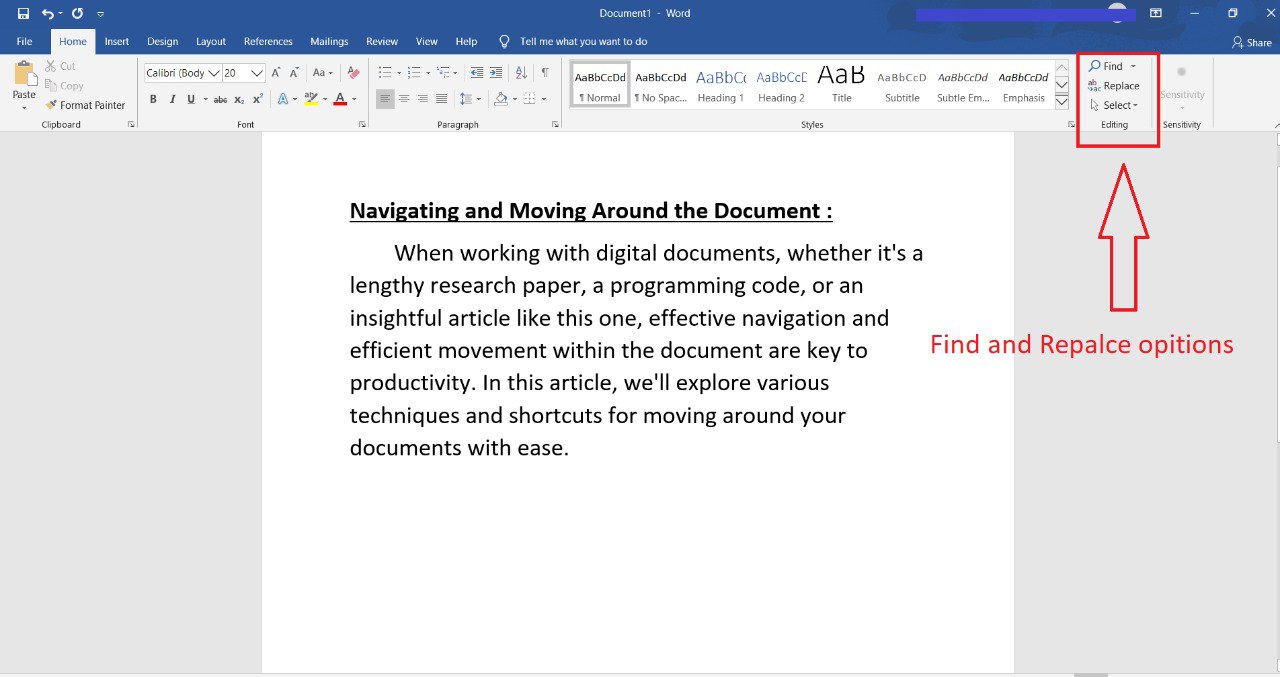Navigating and Moving Around the Document
When working with digital documents, whether it's a lengthy research paper, a programming code, or an insightful article like this one, effective navigation and efficient movement within the document are key to productivity. In this article, we'll explore various techniques and shortcuts for moving around your documents with ease.
1. Scrolling
The most fundamental way to navigate a document is scrolling. You can use the scrollbar on the right-hand side of your screen to move up and down through the content. Additionally, most modern mouse have a scroll wheel that enables you to scroll by simply rolling the wheel. Keyboard shortcuts like the arrow keys and Page Up/Page Down keys are also handy for scrolling.

2. Keyboard Shortcuts
Keyboard shortcuts are powerful tools for document navigation:
- Ctrl + Home (Cmd + Home on Mac): Takes you to the beginning of the document.
- Ctrl + End (Cmd + End on Mac): Takes you to the end of the document.
- Ctrl + Arrow Keys (Cmd + Arrow Keys on Mac): Moves the cursor word by word in the direction of the arrow key.
- Ctrl + Backspace (Cmd + Delete on Mac): Deletes the previous word.
- Ctrl + Space (Cmd + Space on Mac): Selects the entire word at the cursor.
- Ctrl + Shift + Arrow Keys (Cmd + Shift + Arrow Keys on Mac): Selects text in the direction of the arrow key.
- Ctrl + A (Cmd + A on Mac): Selects the entire document.
3. Find and Replace
Most word processing software and text editors come with a "Find and Replace" feature. You can activate it by pressing Ctrl + F (Cmd + F on Mac). It allows you to search for specific words or phrases and replace them if needed. This is incredibly useful when you're working with large documents and need to locate specific content quickly.

4. Table of Contents
For lengthy documents, especially those in academic or technical fields, a table of contents is a valuable aid. You can create one by structuring your document with headings and sub-headings, then generating the table of contents automatically. Readers can click on an entry in the table to jump directly to that section.

5. Hyperlinks
Hyperlinks are not just for the web. You can add links with in your documents to jump to specific sections, references, or external sources. This is particularly useful for creating interactive and navigable PDFs, e-books, and presentations.

In conclusion, mastering document navigation and movement is a valuable skill that can significantly enhance your productivity, whether you're a student, a writer, a programmer, or anyone who deals with digital content regularly. By familiarizing yourself with these techniques and tools, you'll find it much easier to navigate and work with documents of all sizes and complexities.
Leave a comment